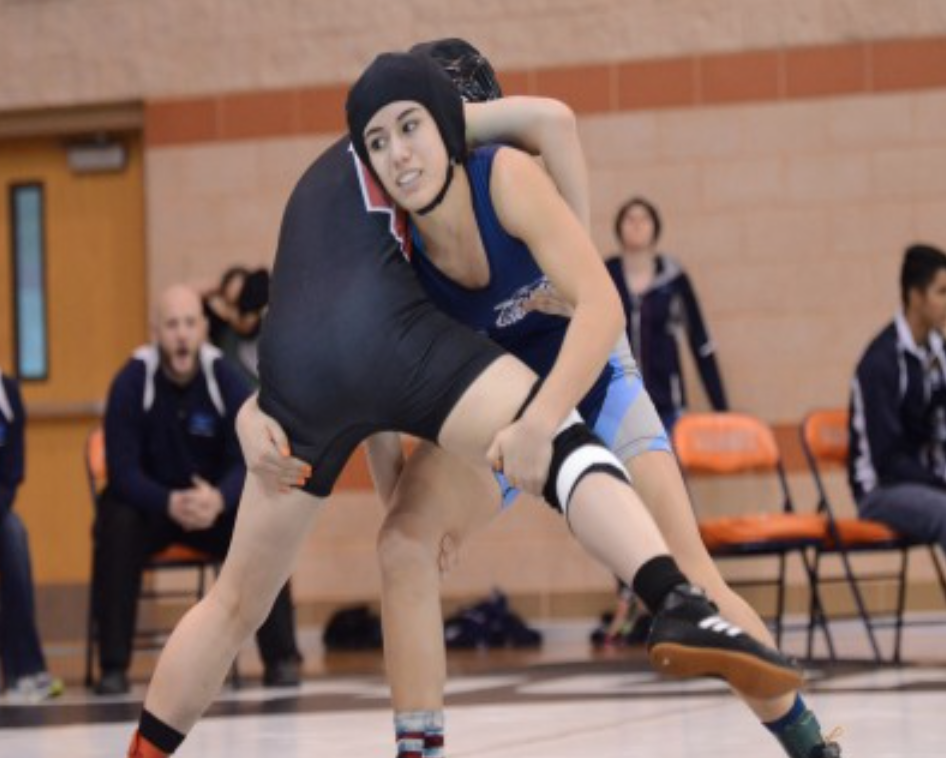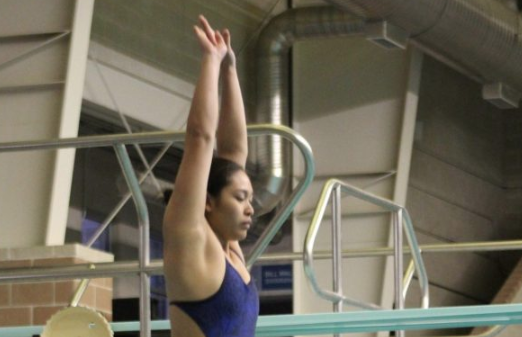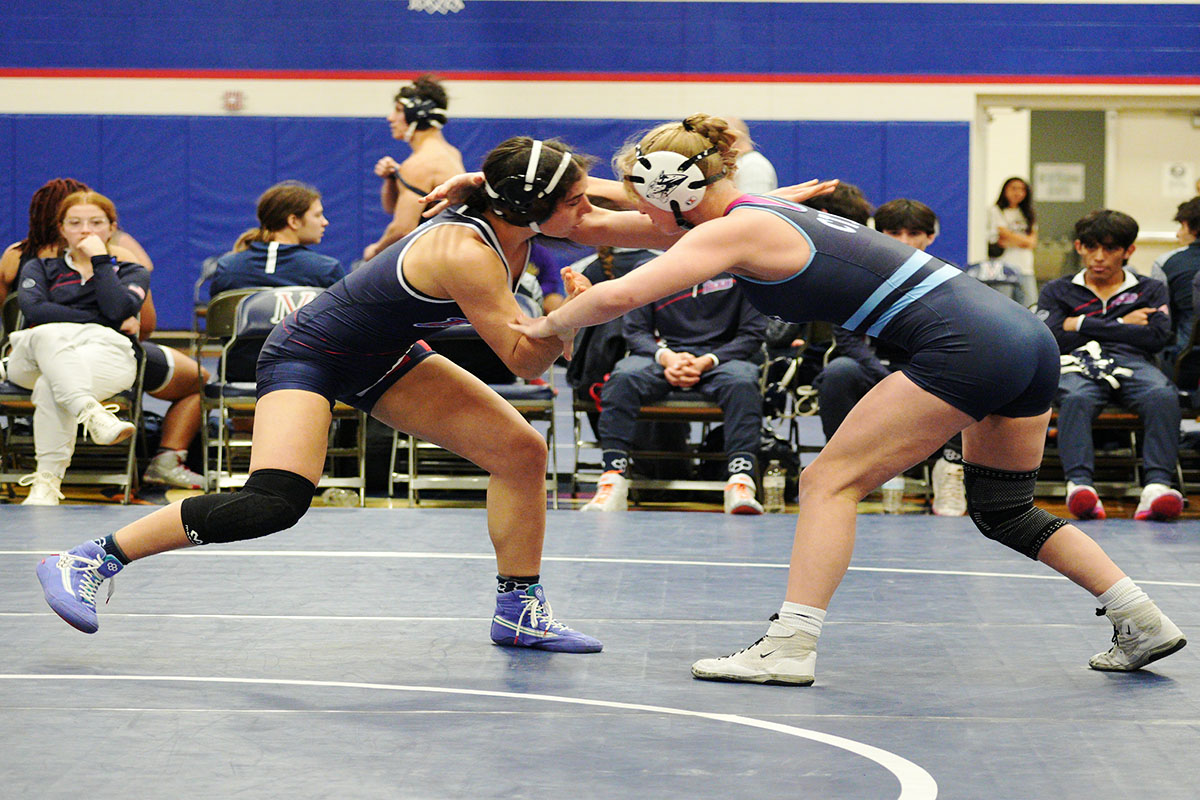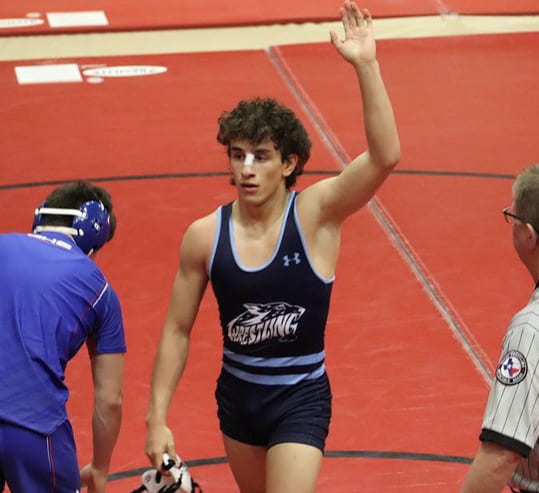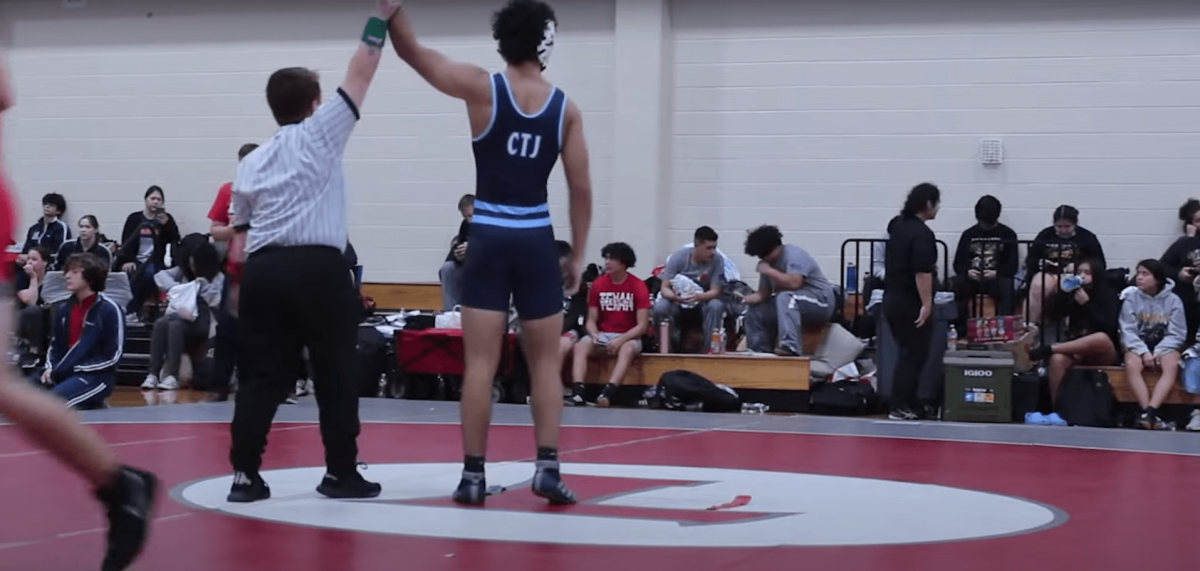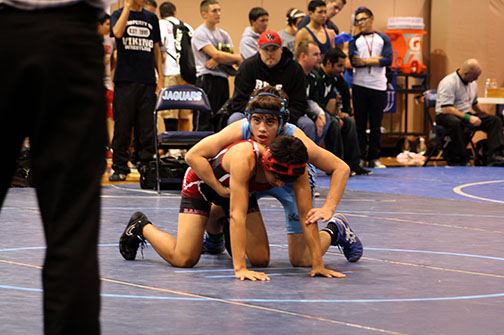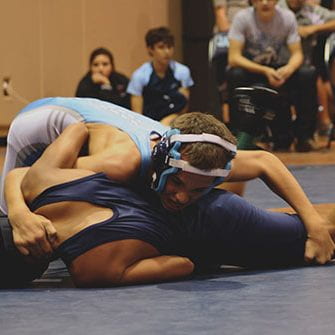by Samuel Abbas | sports editor
Contact sports such as wrestling give female athletes the chance to be equal with male athletes while wrestling against opponents of equal age and weight.
“I chose to join wrestling because I’ve always loved contact sports. I did martial arts since I was five and it seemed like it was missing something, and so I joined wrestling. It’s just a really awesome sport and it’s everything that martial arts lacked,” senior Morgan Miller said.
In addition to wrestling being open to both girls and guys, there are also several different weight classes ranging from 106 pounds all the way to 285 (heavyweight), which help to create more of an even playing field, since only people who are in the same age and weight class can compete against one another.
 “I think they both [males and females] have opportunities to succeed as the next guy, and because wrestling is a sport that is divided into weight classes, they get a fair opportunity to compete against someone their age and their same weight. It can range from four year olds all the way up until national competition,” wrestling coach Jayson Conger said. “It’s all divided into age and weight brackets so there’s never that, ‘Oh there’s this 300 pound kid and this little 100 pound kid having to wrestle.’ So definitely they garner the same opportunities because it’s all what they want to put into it.”
“I think they both [males and females] have opportunities to succeed as the next guy, and because wrestling is a sport that is divided into weight classes, they get a fair opportunity to compete against someone their age and their same weight. It can range from four year olds all the way up until national competition,” wrestling coach Jayson Conger said. “It’s all divided into age and weight brackets so there’s never that, ‘Oh there’s this 300 pound kid and this little 100 pound kid having to wrestle.’ So definitely they garner the same opportunities because it’s all what they want to put into it.”
A primary difference between wrestling and other sports is that wrestlers are attempting to outlast their opponent. A wrestling match consists of three periods, each lasting around two minutes each. For six minutes these athletes give it their all and a winner is announced at the end of the three periods.
“So, in most of your individual sports, if you look at cross country, tennis, swimming-they’re all trying to beat times. With wrestling, it’s very specific in that our expectations are we want you to work as hard as you can, and that’s across the board. Boys, girls, whatever – we’re expecting them to put everything that they have into it. And so because of that, because that expectation is there, that’s what turns it into a different sport,” Salazar said.
In the past, wrestling has been a sport where mainly boys have participated. It’s because of this that girls who wanted to participate in wrestling often had to wrestle boys. This caused conflicts as some boys did not want to wrestle girls because it seemed unfair and/or inappropriate.
“When I was growing up, girls wrestled boys. There wasn’t a girl’s wrestling and a boy’s wrestling. There weren’t two separate tournaments. If girls wanted to do what guys do they had to wrestle with boys. And honestly that’s not fair because 90% of the time a boy would win that match and there’s nothing good that comes out of that,” Conger said. “If a boy beats a girl, he beat a girl and if a girl beats a boy; the boy lost to a girl. Nothing good comes out of that for either party.”
Conger went on to explain how he’s been in situations where, regardless of whether or not the boy wins the competition, the entire situation simply seemed unfair for both wrestlers.
“The girls aren’t allowed to learn and grow and the boy isn’t allowed to have fair opportunity to succeed because he beat a girl, and let’s just face it, in our society it is looked down upon. I’ve been in competition where a good wrestler, maybe the number one or number two wrestler, had actually forfeited because a girl was in the tournament. Their coach or parent didn’t want them to wrestle a girl so they forfeited,” Conger said. “It’s not fair to put them in that predicament and put that in front of them and make them choose what to do. It’s just fair for them all to have their own separate entities and their own separate sports, just like girl’s basketball and boy’s basketball.”
Because people develop differently at different time periods, giving wrestlers the opportunity to wrestle an opponent of the same age and weight class regardless of gender can encourage equality, according to Salazar.
“It’s also nice because here in Texas we have separate boys and girls divisions so that makes the playing field a lot more even, because girls and guys are built a lot differently. Separating them allows the girls to compete with other girls where they won’t have to worry about a 14 year old boy and a 14 year old girl, because their muscles are not at the same development stages. And so it really levels the playing field there for them as well,” Salazar said.


